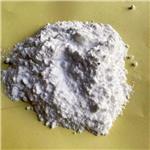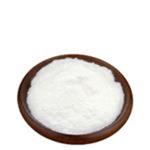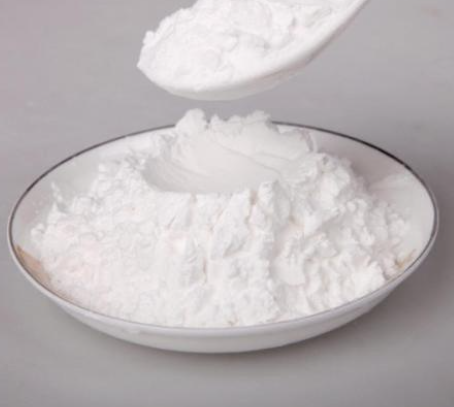Terephthaldicarboxaldehyde: A Key Intermediate in Organic Synthesis
Introduction
Terephthaldicarboxaldehyde, also known as terephthalaldehyde or 1,4-benzenedicarboxaldehyde, is an aromatic dialdehyde with significant importance in the field of organic synthesis. As a derivative of terephthalic acid, this compound is characterized by two formyl groups attached to a benzene ring at the para positions. Its unique structural properties make it a valuable intermediate for a wide range of chemical applications.

Figure 1 Characteristics of Terephthaldicarboxaldehyde
Properties of Terephthaldicarboxaldehyde
Terephthaldicarboxaldehyde (C8H6O2) has a molecular weight of 134.13 g/mol. It consists of a benzene ring with two aldehyde groups (-CHO) attached at the 1 and 4 positions, which contributes to its symmetrical structure and distinct reactivity.
In its pure form, terephthaldicarboxaldehyde appears as a white to light yellow crystalline solid. It has a melting point of approximately 114-117°C and a boiling point of 305°C. The compound is sparingly soluble in water but exhibits good solubility in organic solvents such as ethanol, acetone, and dimethyl sulfoxide (DMSO).
The presence of aldehyde groups imparts high reactivity to terephthaldicarboxaldehyde, particularly in condensation and cyclization reactions. This reactivity is a result of the electrophilic nature of the carbonyl carbon in the aldehyde groups, making it susceptible to nucleophilic attack. Additionally, the aromatic ring enhances the stability and resonance of the molecule, contributing to its overall chemical behavior.
Main Components
The primary component of terephthaldicarboxaldehyde is the benzene ring with two aldehyde functional groups. The benzene ring provides a stable aromatic core, while the aldehyde groups confer high reactivity, enabling various chemical transformations.
The interaction between the aldehyde groups and the benzene ring is crucial for the compound’s properties. The electron-withdrawing nature of the aldehyde groups affects the electron density of the benzene ring, making it more reactive towards electrophilic substitution and nucleophilic addition reactions.
Applications of Terephthaldicarboxaldehyde
Terephthaldicarboxaldehyde is a versatile intermediate used in numerous chemical synthesis processes. One of its primary applications is in the production of fluorescent dyes and optical brighteners. The compound’s ability to form Schiff bases with amines makes it a valuable starting material for synthesizing compounds that exhibit strong fluorescence, which are used in biological imaging and textile industries.
In the field of polymer chemistry, terephthaldicarboxaldehyde serves as a key building block for the synthesis of polyimides and polyesters. These polymers are known for their thermal stability, mechanical strength, and chemical resistance, making them suitable for high-performance materials in aerospace, electronics, and automotive applications.
Terephthaldicarboxaldehyde is also employed in the production of pharmaceuticals. Its reactive aldehyde groups allow for the formation of various bioactive molecules through condensation reactions with amines, hydrazines, and other nucleophiles. This versatility makes it a critical intermediate in the synthesis of drugs with diverse therapeutic properties, including antimicrobial, anticancer, and anti-inflammatory agents.
In addition to its use in organic synthesis, terephthaldicarboxaldehyde is utilized in analytical chemistry as a reagent for detecting and quantifying certain functional groups. Its ability to form stable adducts with primary amines, for example, is leveraged in chromatographic techniques for the analysis of complex mixtures.
Storage Methods
Proper storage of terephthaldicarboxaldehyde is essential to maintain its stability and reactivity. The compound should be stored in a cool, dry place, away from sources of heat and light. A temperature range of 2°C to 8°C (35.6°F to 46.4°F) is recommended for optimal stability, although it can be stored at room temperature for shorter periods.
To protect terephthaldicarboxaldehyde from moisture and air, it should be kept in tightly sealed containers. Glass containers with airtight seals are ideal for preventing the ingress of air and moisture, which can lead to oxidation and degradation of the aldehyde groups. The use of desiccants, such as silica gel, can further help maintain a dry environment within the storage container.
In cases where prolonged storage is required, it is advisable to store terephthaldicarboxaldehyde under an inert atmosphere, such as nitrogen or argon, to minimize the risk of oxidation. This practice is particularly important if the compound is to be used in sensitive synthetic applications where purity and reactivity are critical.
Conclusion
Terephthaldicarboxaldehyde is a compound of significant interest in the field of organic chemistry, thanks to its unique structure and high reactivity. Its symmetrical benzene ring with two aldehyde groups enables a wide range of chemical transformations, making it a versatile intermediate in the synthesis of dyes, polymers, pharmaceuticals, and analytical reagents.
![Article illustration]() References
References
[1]Xu A, Xu R, Wang J. Solubility determination and thermodynamic modelling of terephthaldialdehyde in ten organic solvents from T=(273.15 to 318.15) K and mixing properties of solutions[J]. The Journal of Chemical Thermodynamics, 2016, 102: 188-198.
[2]Stilinovi? V, Cin?i? D, Kaitner B. The Effect of CH··· N Interactions on Crystal Structure and Thermal Properties of Two Novel Diamine Schiff Bases Derived from Terephthaldialdehyde[J]. Acta chimica slovenica, 2008, 55(4).
See also
Lastest Price from Terephthalaldehyde manufacturers

US $8.00/KG2024-09-19
- CAS:
- 623-27-8
- Min. Order:
- 1KG
- Purity:
- 99%
- Supply Ability:
- 10 ton

US $6.00/kg2024-09-19
- CAS:
- 623-27-8
- Min. Order:
- 1kg
- Purity:
- 99%
- Supply Ability:
- 2000KG/Month


